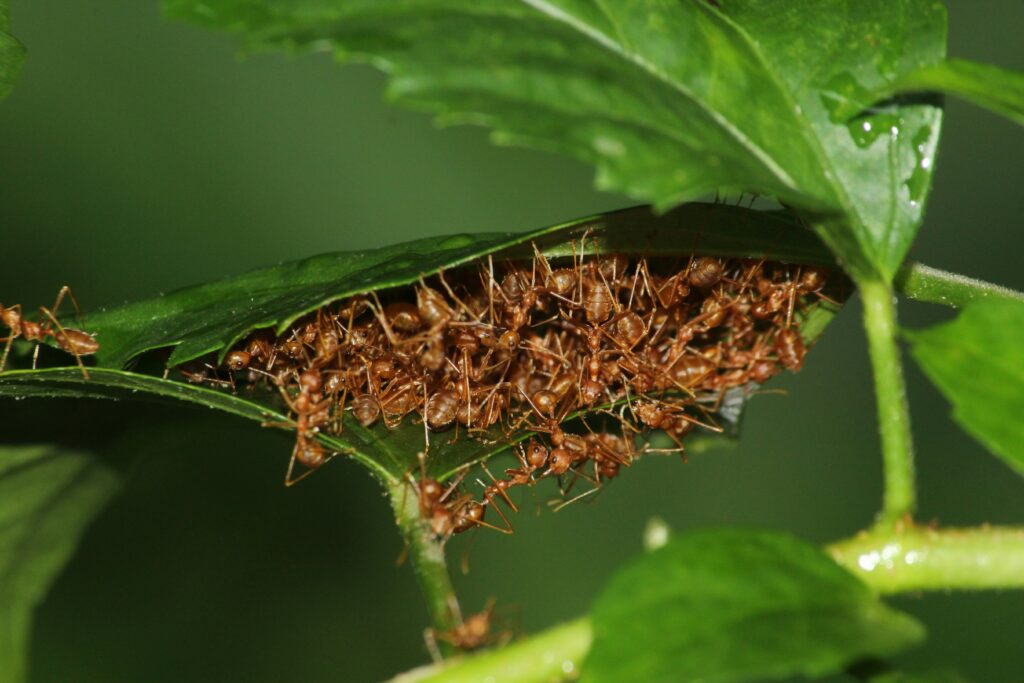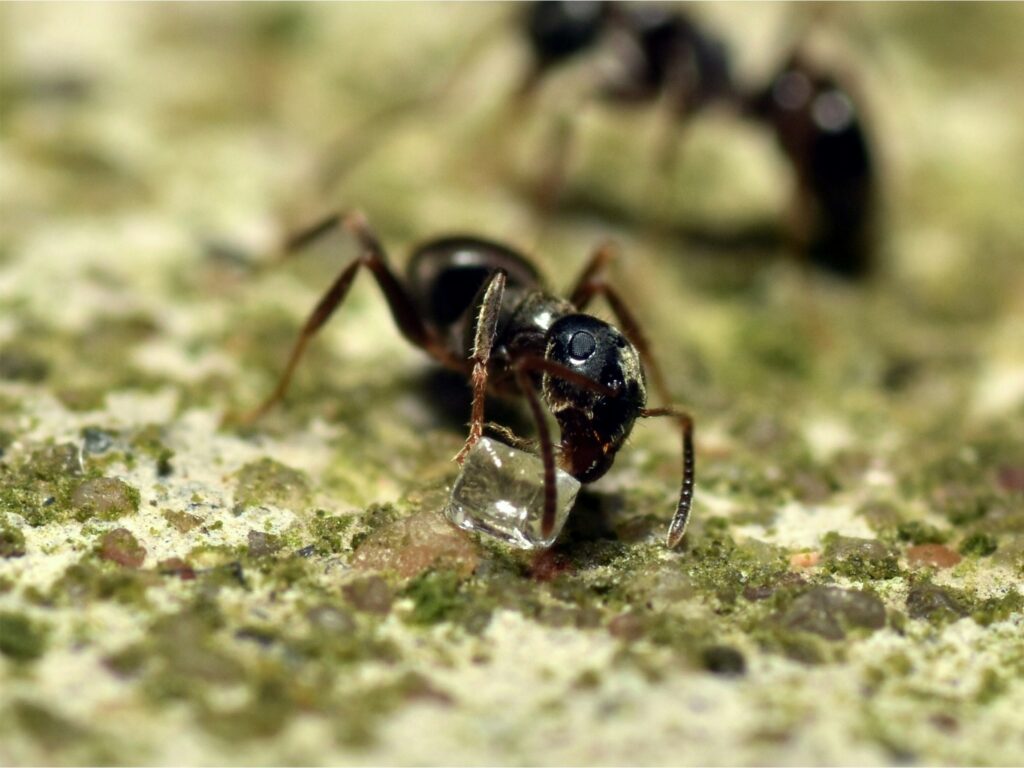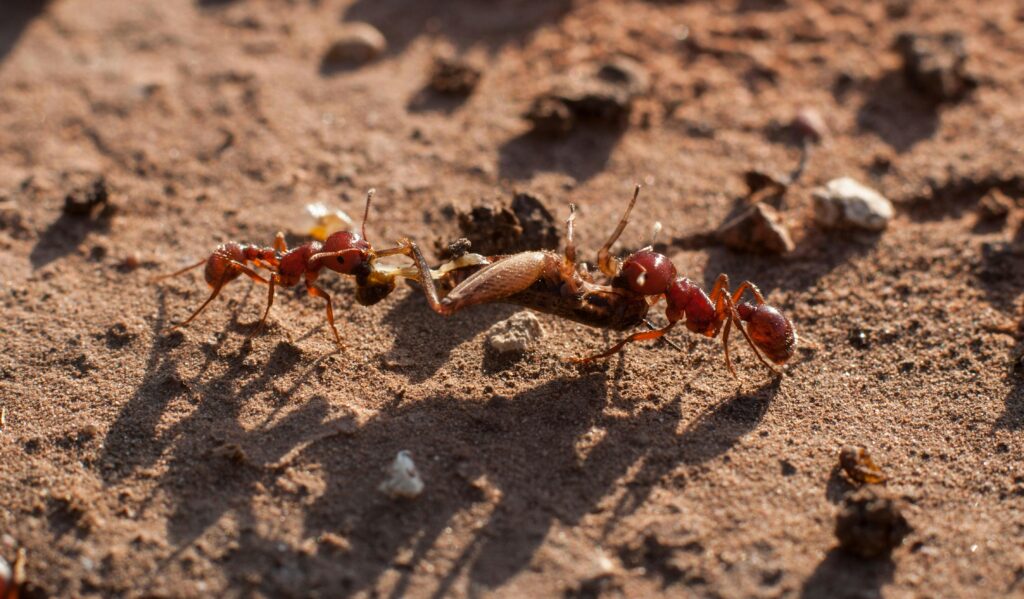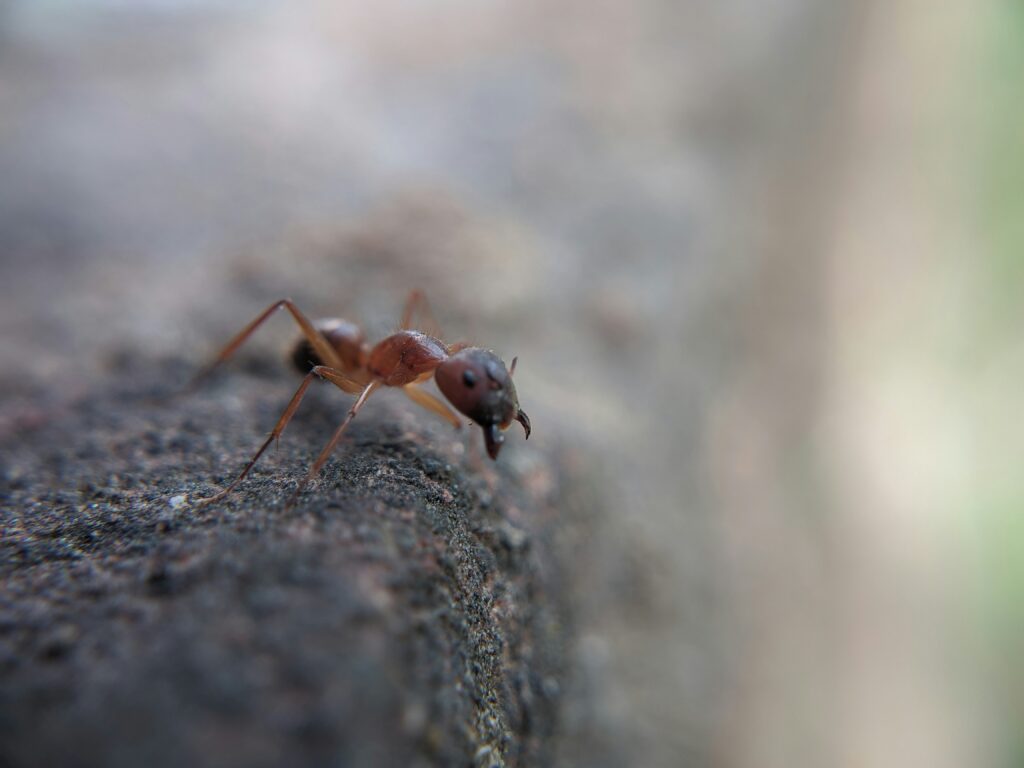In the complex world of invasive species, a tiny but formidable contender has been making headlines across the southern United States. The Tawny Crazy Ant (Nylanderia fulva), formerly known as the Rasberry Crazy Ant, is steadily carving out territory once dominated by fire ants. Named for their erratic, unpredictable movement patterns and reddish-brown coloration, these tiny invaders from South America have become a significant ecological concern. Unlike their predecessors, they don’t deliver painful stings, but their sheer numbers and adaptive behaviors make them a formidable pest. As they continue their march across the American South, scientists, homeowners, and pest control professionals are scrambling to understand and manage this hyperactive swarm that’s changing the invasive ant landscape.
Origins and Invasion History

The Tawny Crazy Ant is native to northern Argentina and southern Brazil, where natural predators and environmental factors keep their populations in check. Their journey to North America began sometime in the early 2000s, with the first documented populations appearing in Houston, Texas, around 2002, discovered by exterminator Tom Rasberry (hence their former common name). Unlike intentionally introduced species, these ants likely arrived as stowaways in shipping containers or nursery materials. Since their initial discovery, they have spread rapidly throughout Texas and across the Gulf Coast states including Louisiana, Mississippi, Florida, and parts of Georgia and Alabama. Their expansion continues at a concerning rate of approximately 20-30 miles per year, primarily through human-assisted transportation rather than natural dispersal, as colonies can be inadvertently moved in potted plants, landscaping materials, and even recreational vehicles.
Physical Characteristics

Tawny Crazy Ants are relatively small insects, measuring only about 1/8 inch in length, making them slightly smaller than fire ants. Their bodies display a uniform reddish-brown or tawny color, lacking the distinct segmentation visible in many other ant species. One of their most distinctive features is their unusually long legs and antennae, which contribute to their erratic, rapid movement patterns that earned them the “crazy” moniker. Unlike fire ants, they possess a single node at the petiole (the narrow waist between the thorax and abdomen) and have numerous hairs covering their bodies. Workers are monomorphic, meaning they’re all roughly the same size, unlike the polymorphic fire ants that have workers of various sizes. When crushed, these ants emit a peculiar odor similar to rotten coconuts, which is another identifying characteristic used by pest management professionals.
Behavior and Movement Patterns

The name “crazy ant” perfectly captures the frenetic, seemingly random movement patterns that distinguish this species. Unlike many ants that follow orderly trails, Tawny Crazy Ants zip about in unpredictable zigzags, racing around at high speeds that can make them difficult to track. This hyperactive behavior becomes particularly noticeable when the ants are disturbed, as they scatter in all directions rather than mounting a coordinated defense. They don’t march in the organized lines typical of many ant species, instead forming loose, chaotic swarms that seem to move with collective randomness. Despite this apparent disorder, their movements are surprisingly effective for foraging and colony expansion. Researchers have observed that this erratic movement actually helps them cover territory more efficiently and locate food sources that might be missed by species with more structured foraging patterns.
Colony Structure and Reproduction

Tawny Crazy Ants form supercolonies with multiple queens, a strategy that allows for explosive population growth and resilience against control measures. Unlike fire ant colonies with a single queen, crazy ant nests can contain dozens or even hundreds of reproductive females, each capable of laying eggs to expand the colony. These supercolonies lack the territorial aggression typically seen between separate ant colonies of the same species, allowing neighboring nests to function as a cooperative network rather than competing entities. Mating typically occurs within the nest, and new colonies form through a process called budding, where queens and workers simply walk to a new location rather than through traditional nuptial flights. This reproductive strategy means that a single property might host multiple interconnected nests, forming a vast network of millions of ants that can extend across several acres. The absence of nuptial flights also makes tracking their spread more difficult for researchers and pest management professionals.
Diet and Foraging Habits

Tawny Crazy Ants are omnivorous opportunists with a varied diet that contributes to their successful invasion. They consume both protein and carbohydrate sources, feeding on other insects (including agricultural pests), nectar, honeydew from aphids, and various human foods. Unlike fire ants that primarily forage outdoors, crazy ants readily enter homes and buildings in search of food and shelter, creating persistent indoor infestations. They show a particular affinity for sweet substances and have a unique relationship with aphids and other honeydew-producing insects, which they farm and protect in exchange for the sugary secretions these insects produce. Their foraging trails can be massive, with millions of workers traveling along established routes that may extend hundreds of feet from the main colony. Interestingly, research has shown they have a higher metabolic rate than many other ant species, requiring them to consume more food to fuel their hyperactive lifestyle, which drives their constant and widespread foraging activity.
Ecological Impact and Displacement of Fire Ants

The ecological consequences of Tawny Crazy Ant invasions are profound, with their most notable impact being the displacement of the previously dominant invasive fire ant (Solenopsis invicta). In areas where crazy ants establish themselves, they can reduce fire ant populations by up to 90% through direct competition for resources and habitat. This displacement occurs through both exploitation competition, where crazy ants simply outcompete fire ants for food sources, and interference competition, where direct confrontations between the species typically result in crazy ant victory despite their smaller size. Beyond ant communities, their massive populations deplete arthropod diversity, with studies showing up to 90% reduction in other arthropod species in heavily infested areas. They also disrupt seed dispersal networks, pollination services, and even impact small vertebrate populations by reducing their food sources. While some might celebrate the reduction of painful fire ant stings, ecologists warn that the crazy ant represents an even more significant ecological threat due to their higher densities and broader impact across food webs.
Chemical Warfare and Detoxification Abilities

One of the most fascinating aspects of Tawny Crazy Ants is their unique chemical defense against fire ants, representing an evolutionary breakthrough that helps explain their competitive success. When confronted by fire ants, which typically deploy a powerful alkaloid venom called solenopsin, crazy ants perform a remarkable behavior: they secrete formic acid from their abdominal gland and then groom themselves, applying this secretion all over their bodies. This formic acid functions as an antidote to the fire ant venom, effectively neutralizing what would otherwise be a lethal chemical attack. Research published in Science demonstrated that crazy ants with blocked formic acid glands suffered 48% mortality when fighting fire ants, while those with functioning glands experienced only 2% mortality. This chemical detoxification ability represents one of the few known examples of an insect evolving a specific antidote to another insect’s venom, giving crazy ants a significant advantage in direct confrontations with fire ants and contributing to their territorial expansion throughout the southeastern United States.
Electrical Equipment Attraction

Perhaps one of the most unusual and economically damaging behaviors of Tawny Crazy Ants is their inexplicable attraction to electrical equipment. These ants are drawn to electrical fields and frequently invade switch boxes, electrical outlets, air conditioning units, and even major infrastructure components like traffic signals and pumping stations. When the ants encounter electrical current, they are electrocuted, but their death triggers an alarm pheromone release that attracts more ants to the same location. This creates a cascading effect where masses of dead ants accumulate in electrical housing, eventually causing short circuits and equipment failure through their sheer numbers. The economic impact of this behavior has been estimated in the millions of dollars, with industries ranging from residential housing to chemical plants reporting significant damage. Scientists theorize that the ants may be attracted to the magnetic fields generated by electrical equipment, though the exact mechanism behind this attraction remains poorly understood despite ongoing research.
Challenges in Control and Management

Controlling Tawny Crazy Ant populations presents unique challenges that have frustrated pest management professionals and homeowners alike. Traditional ant baits developed for fire ants prove largely ineffective, as crazy ants show little interest in the oil-based attractants typically used in these products. Their supercolony structure with multiple queens means that eliminating a single queen doesn’t collapse the colony as it would with fire ants. Additionally, crazy ants don’t build centralized mounds that can be targeted with insecticide treatments, instead nesting opportunistically in various locations including leaf litter, mulch, potted plants, and wall voids. Their massive population densities mean that even effective treatments provide only temporary relief, as neighboring colonies quickly reinfest treated areas. Perhaps most frustrating is their ability to recognize some chemical barriers, which they avoid by creating living bridges of their own bodies to cross over treated areas. Current management approaches focus on integrated pest management techniques combining habitat modification, targeted insecticides, and physical exclusion methods, though complete eradication once established has proven nearly impossible.
Impact on Human Environments

While Tawny Crazy Ants don’t deliver the painful sting characteristic of fire ants, their impact on human environments can be equally if not more problematic. Infestations often involve astronomical numbers, with population densities reaching up to 100 times those of typical ant species in the same area. Homeowners report “rivers” of ants moving across their properties, with infestations so severe that walking outdoors becomes uncomfortable as ants rapidly climb onto shoes and legs. Inside homes, they infest everything from kitchen counters to bathroom fixtures, contaminating food and creating unsanitary conditions that can be nearly impossible to remediate while the infestation persists. The psychological toll of living with such infestations shouldn’t be underestimated, with families reporting significant distress and even property abandonment in extreme cases. Economic impacts extend beyond control costs to include reduced property values in heavily infested areas, particularly in states like Texas and Florida where real estate disclosures about crazy ant presence are increasingly common.
Agricultural and Wildlife Impacts

The agricultural impact of Tawny Crazy Ants extends beyond their direct consumption of crops to include complex ecological disruptions that affect farming and wildlife management. In agricultural settings, they tend to honeydew-producing insects like aphids and scale insects, protecting these pests from natural predators and parasitoids in exchange for the sweet secretions they produce. This protection leads to increased populations of these crop pests, resulting in greater damage to various crops including citrus, sugarcane, and vegetables. Livestock operations report animals experiencing distress when crazy ants invade feeding areas or climb onto the animals themselves, particularly affecting vulnerable young animals and poultry. Wildlife impacts include documented cases of asphyxiation of small animals, including nestling birds, when swarms of ants invade nests and block the airways of helpless young. There’s also growing concern about their impact on endangered species, particularly ground-nesting birds and reptiles whose eggs and young may be vulnerable to these aggressive invaders.
Scientific Research and Biological Control

The scientific community has mobilized to address the Tawny Crazy Ant invasion, with research focusing on understanding their biology, behavior, and potential control methods. One promising avenue is the identification of natural enemies from their native South American range that might serve as biological control agents. In 2019, researchers identified a microsporidian pathogen (Myrmecomorba nylanderiae) that infects crazy ants in their native range, potentially limiting their populations there. Initial studies introducing this pathogen to U.S. crazy ant populations have shown promise, with infected colonies experiencing significant population declines over time. Other research explores pheromone-based attractants that might improve baiting strategies or volatile compounds that could disrupt their chemical communication systems. Genetic research is also underway to better understand their invasion history and population structure, which might reveal vulnerabilities that could be exploited for control. Scientists stress that long-term management will likely require an integrated approach combining biological control with improved chemical treatments and habitat management strategies tailored to this uniquely challenging invasive species.
Future Projections and Spread Potential

Climate modeling and ecological research suggest that Tawny Crazy Ants have not yet reached their full invasion potential in North America. Current projections indicate they could potentially spread throughout most of the southeastern United States, with suitable habitat extending as far north as Tennessee and North Carolina under current climate conditions. Climate change models suggest warming temperatures could extend their potential range even further northward in coming decades. Their ability to thrive in various habitats, from coastal areas to urban environments and agricultural landscapes, makes them particularly concerning as a continuing invasive threat. Researchers warn that without effective control measures and greater public awareness to prevent human-assisted dispersal, crazy ants will likely continue their expansion for the foreseeable future. Ecological niche modeling also raises concerns about potential invasions in other regions with similar climates worldwide, including parts of Asia, Australia, and Africa, making this not just a North American concern but a potential global invasive species issue requiring international cooperation and vigilance.
The Tawny Crazy Ant represents one of the most significant invasive ant species to impact North America in recent decades. Their remarkable adaptations—from chemical warfare capabilities against fire ants to their supercolony structure and electrical equipment attraction—make them both a fascinating subject for scientific study and a formidable challenge for pest management. As they continue their march across the southern United States, displacing fire ants and disrupting ecosystems, the need for effective management strategies becomes increasingly urgent. While research continues to seek long-term solutions, public awareness about preventing their spread remains crucial. The story of these hyperactive invaders serves as a powerful reminder of how even tiny organisms can dramatically reshape environments when introduced outside their native range, creating cascading effects through ecosystems and human communities alike.

